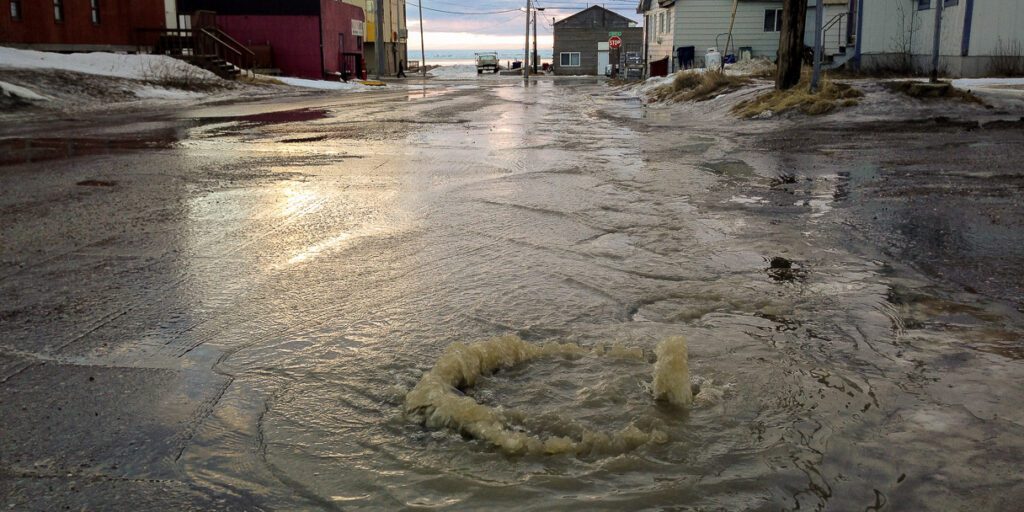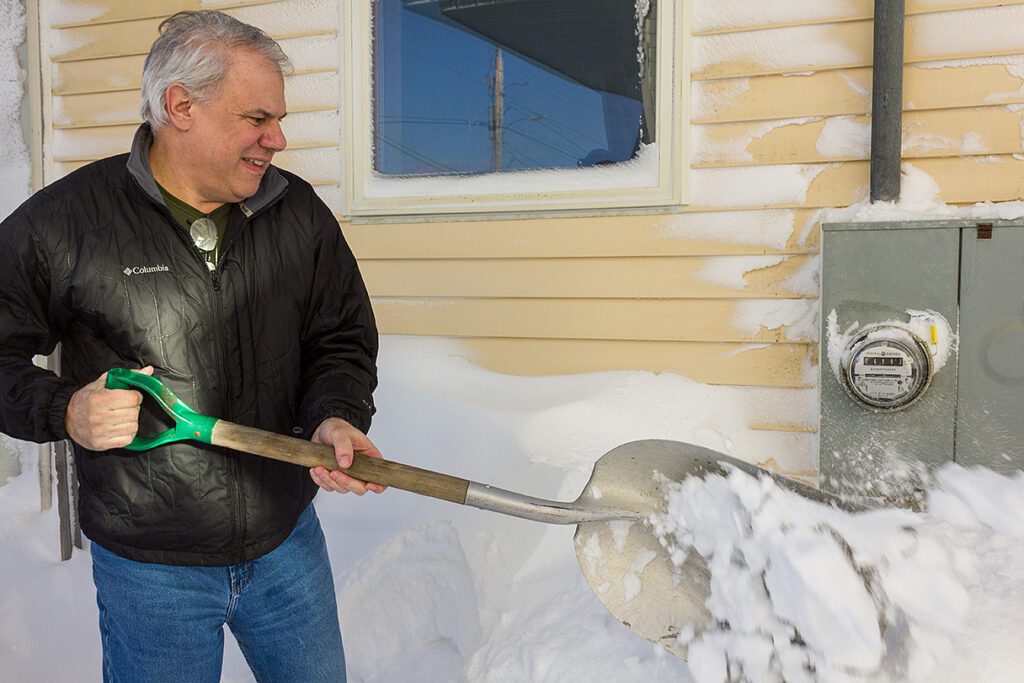The streets looked like springtime, and the air was so warm – by Alaskan standards, at least – it might have been mistaken for summer. But the date wasn’t in May or June; it was late January.
On January 27th, Nome broke a high temperature record not just for the day, but for the winter months of December, January, and February combined. The high of 51° F meant that many of our listeners were peeling off warmer jackets and gloves; some hardier Alaskans even seized the opportunity to wear shorts. The record-breaking heat came amid days on end of above-freezing temperatures, making 2014’s January one of the warmest on record.
The warmth meant a rather bizarre disruption to Western Alaska’s winter landscape – and the winter lifestyle that is at the heart of our region’s culture and identity. With temperatures prevailing above freezing, the snow cover that almost always holds until May began to melt and deteriorate. Nome’s roads were blanketed in dangerously slick ice, and sewer drains (like the one pictured) were overwhelmed, in some places, with the runoff from the massive thaw.
The melt was inconvenient, at the least, for many of those we serve. With open “leads” (open water) on the Bering Sea – normally frozen solid at this time of year – our listeners weren’t able to travel across the sea ice (a common winter activity on snowmachine) or set traps (or “pots”) through the ice for crabs, a traditional subsistence food. The lack of snow surely disrupted the plans of many local sled dog mushers, skiers, and snowshoers.
It’s in moments like these that our newscasts and weather forecasts are so important. We’re so grateful to you for making possible our daily efforts to bring our listeners accurate, timely, crucially needed information. Thank you!






